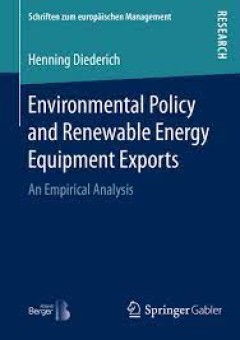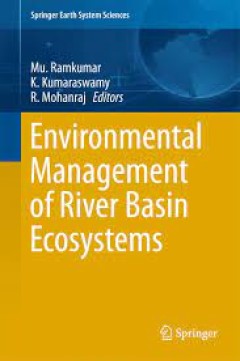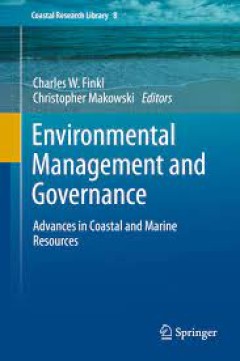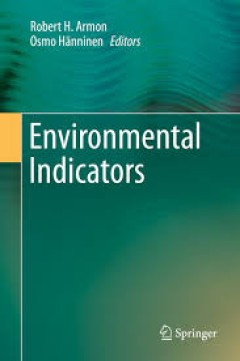Filter by

Environmental Policy and Renewable Energy Equipment Exports An Empirical Ana…
This thesis investigates the connection between environmental regulation, technological innovation, and export competitiveness in renewable energy equipment based on a large sample of 225 developed and developing countries from 1990 to 2012. The empirical analysis yields strong supporting evidence for the narrowly strong Porter Hypothesis as well as for the lead market theory. The results sugge…
- Edition
- -
- ISBN/ISSN
- 978-3-658-13558-4
- Collation
- 17 b/w illustrations
- Series Title
- -
- Call Number
- -

Environmental Photochemistry Part III
This volume builds on the previous two editions, Environmental Photochemistry Part I and Part II, which reflect the diverse range of activities in this highly dynamic research field. The chapters cover fundamental topics, from photocatalyst materials, surface-modified materials, reaction kinetics and reactor modelling, to translational research activities on chemical synthesis, energy conversio…
- Edition
- -
- ISBN/ISSN
- 978-3-662-46795-4
- Collation
- 79 b/w illustrations, 70 illustrations in colour
- Series Title
- -
- Call Number
- -

Environmental Management of River Basin Ecosystems
This book offers a unique collection of inter- and multidisciplinary studies on river systems. Rivers have been the prime source of sustenance since the advent of civilization and river systems often form the basis for agriculture, transport, water, and land for domestic, commercial, and industrial activities, fostering economic prosperity. A river basin is a basic geographical and climatologic…
- Edition
- -
- ISBN/ISSN
- 978-3-319-13425-3
- Collation
- 279 b/w illustrations, 8 illustrations in colour
- Series Title
- -
- Call Number
- -

Environmental Management and Governance Advances in Coastal and Marine Resou…
This book deals with recent advances in coastal marine environmental management and governance. Various chapters consider new aspects of conservation, assessment of ecosystem health status, environmental survey and protection, frameworks of ocean service and governance, new applications of geo processing and GIS technology, beach management, aquaculture site selection, assessment of water quali…
- Edition
- -
- ISBN/ISSN
- 978-3-319-06305-8
- Collation
- 33 b/w illustrations, 120 illustrations in colour
- Series Title
- -
- Call Number
- -

Environmental Kuznets Curve Hypothesis and Carbon Dioxide Emissions
This book investigates the relationship between environmental degradation and income, focusing on carbon dioxide (CO2) emissions from around the world, to explore the possibility of sustainable development under global warming. Although many researchers have tackled this problem by estimating the Environmental Kuznets Curve (EKC), unlike the approach to sulfur dioxide emissions, there seems to …
- Edition
- -
- ISBN/ISSN
- 978-4-431-55921-4
- Collation
- 5 b/w illustrations, 1 illustrations in colour
- Series Title
- -
- Call Number
- -

Environmental Indicators
Environmental indicators are the first line of warning against hazards caused by humans or nature catastrophes to prevent diseases and death of living organisms. The present book covers a large variety of environmental indicators from physical-chemistry through economical, bioinformatics, electromagnetic irradiation and health aspects, all dealing with environmental pollution. This volume has b…
- Edition
- -
- ISBN/ISSN
- 978-94-017-9499-2
- Collation
- 75 b/w illustrations, 161 illustrations in colour
- Series Title
- -
- Call Number
- -

Environmental Implications of Recycling and Recycled Products
This book includes details on the environmental implications of recycling, modeling of recycling, processing of recycled materials, recycling potential of materials, characterisation of recycled materials, reverse logistics, case studies of recycling various materials etc.
- Edition
- -
- ISBN/ISSN
- 978-981-287-643-0
- Collation
- 48 b/w illustrations
- Series Title
- -
- Call Number
- -

Environmental Heresies The Quest for Reasonable
This book systematically deconstructs the pervasive and counter-productive discourse surrounding environmental policy. The authors argue that environmental policy problems are always framed such that conflict is inevitable—a particular project or policy must be accepted versus a specific environmental asset that must be protected. Over the course of 12 chapters, the authors demonstrate that c…
- Edition
- -
- ISBN/ISSN
- 978-1-137-60083-7
- Collation
- 8 b/w illustrations
- Series Title
- -
- Call Number
- -

Environmental Finance and Investments
This textbook provides an introduction to environmental finance and investments. The current situation raises fundamental questions that this book aims to address. Under which conditions could carbon pricing schemes contribute to a significant decrease in emissions? What are the new investment strategies that the Kyoto Protocol and the emerging carbon pricing schemes around the world should pro…
- Edition
- -
- ISBN/ISSN
- 978-3-662-48175-2
- Collation
- 36 b/w illustrations, 36 illustrations in colour
- Series Title
- -
- Call Number
- -

Environmental Epigenetics
This book examines the toxicological and health implications of environmental epigenetics and provides knowledge through an interdisciplinary approach. Included in this volume are chapters outlining various environmental risk factors such as phthalates and dietary components, life states such as pregnancy and ageing, hormonal and metabolic considerations and specific disease risks such as cance…
- Edition
- -
- ISBN/ISSN
- 978-1-4471-6678-8
- Collation
- 5 b/w illustrations, 33 illustrations in colour
- Series Title
- -
- Call Number
- -
 Computer Science, Information & General Works
Computer Science, Information & General Works  Philosophy & Psychology
Philosophy & Psychology  Religion
Religion  Social Sciences
Social Sciences  Language
Language  Pure Science
Pure Science  Applied Sciences
Applied Sciences  Art & Recreation
Art & Recreation  Literature
Literature  History & Geography
History & Geography